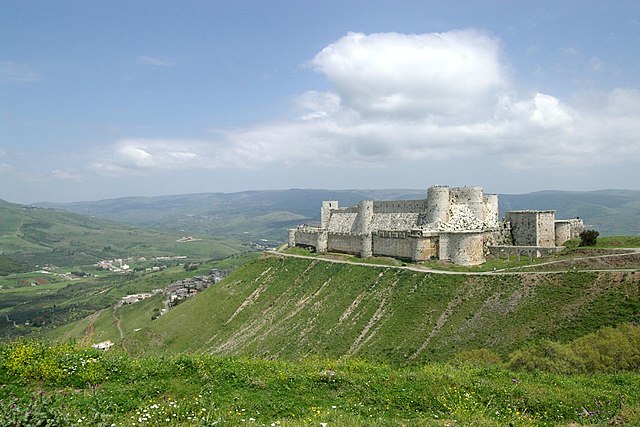Krak des Chevaliers is a medieval castle in Syria and one of the most important preserved medieval castles in the world. The site was first inhabited in the 11th century by Kurdish troops garrisoned there by the Mirdasids. In 1142 it was given by Raymond II, Count of Tripoli, to the order of the Knights Hospitaller. It remained occupied by them until it was reconquered by the Muslims in 1271.
Krak des Chevaliers from the southwest
Krak des Chevaliers overlooking the surrounding area
Artist's rendering of Krak des Chevaliers as seen from the northeast. From Guillaume-Rey, Étude sur les monuments de l'architecture militaire des croisés en Syrie et dans l'île de Chypre (1871).
The area between the inner and outer walls is narrow and was not used for accommodation.
Raymond II, Count of Tripoli
Raymond II was count of Tripoli from 1137 to 1152. He succeeded his father, Pons, Count of Tripoli, who was killed during a campaign that a commander from Damascus launched against Tripoli. Raymond accused the local Christians of betraying his father and invaded their villages in the Mount Lebanon area. He also had many of them tortured and executed. Raymond was captured during an invasion by Imad ad-Din Zengi, atabeg of Mosul, who gained the two important castles of Montferrand and Rafaniya in exchange for his release in the summer of 1137.
His seal
Krak des Chevaliers: the large fortress built by the Knights Hospitaller on the land that Raymond had granted to them in 1142
The trobadour Jaufre Rudel dying in the arms of Raymond's wife, Hodierna of Jerusalem







